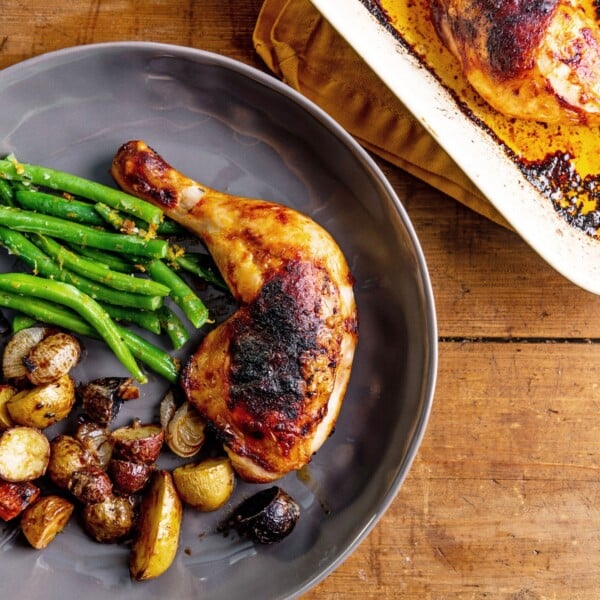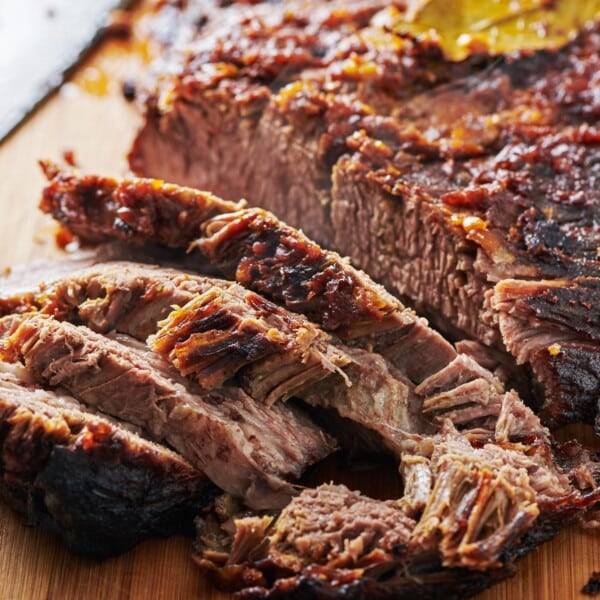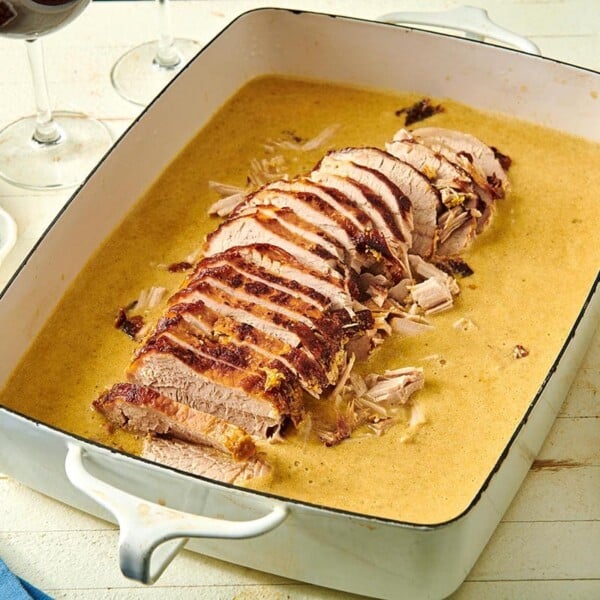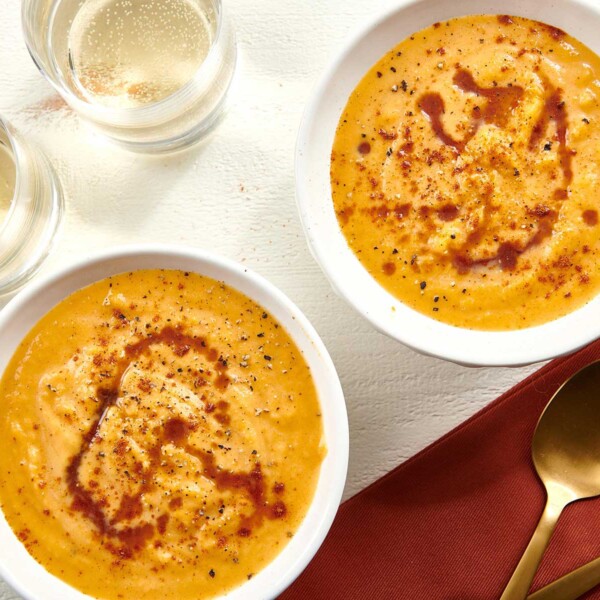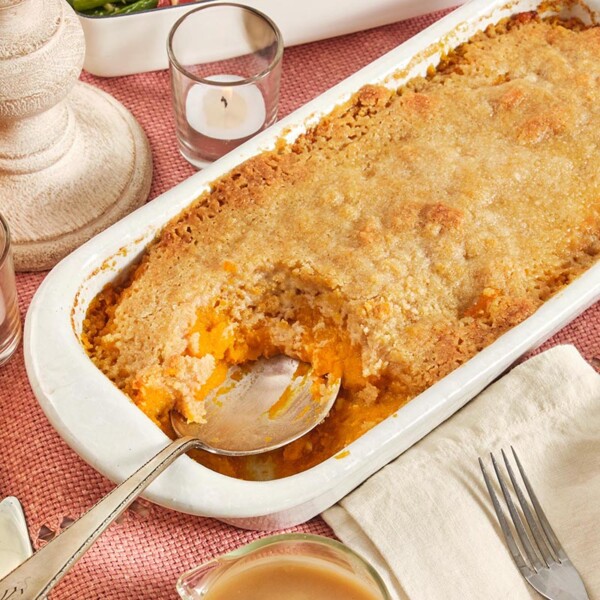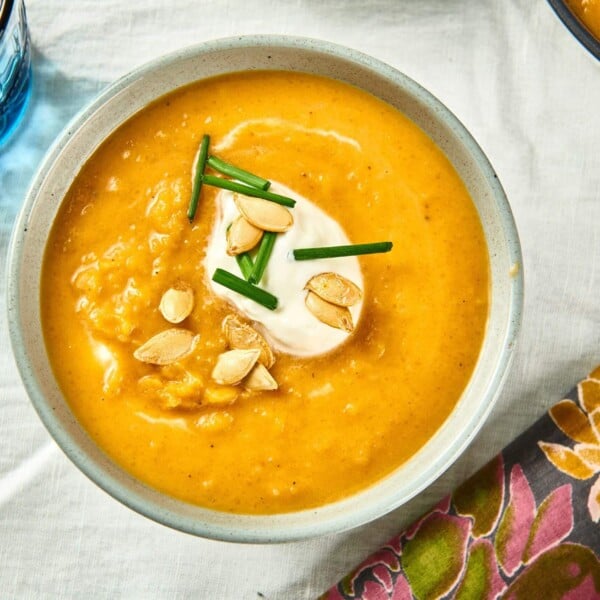Oven-Roasted Fall Vegetables
on Oct 30, 2023, Updated Mar 06, 2024
This post may contain affiliate links. Please read our disclosure policy.
Colorful, caramelized and so good for you, this is the best way to cook all kinds of cool-weather vegetables.
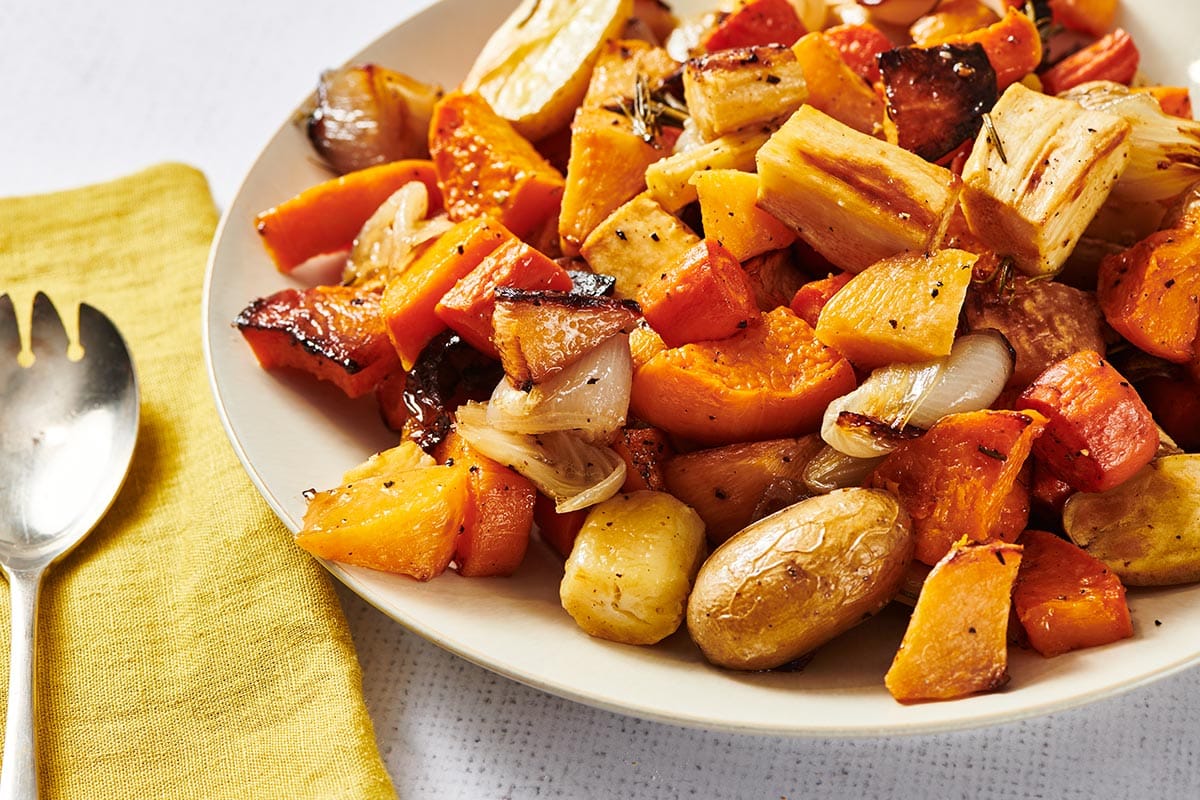
A sheet pan of colorful, sweet, and earthy roasted vegetables is one of my absolute favorite things to make in the fall throughout the colder months. Roasted vegetables go with everything; they’re easy to make in big batches, they’re colorful, they’re healthy, and if they are on the table, I might not even get to the main course.
And, you can mix and match the vegetables however you like — this is a basic blueprint or technique for making roasted vegetables, and you can switch things up as the seasons and the mood strike you. Fresh rosemary sprigs, salt, and pepper are the only seasonings you really need!
Roasted veggies are perfect with any meal, including Roast Eye of Round, Baked Salmon, or Roast Chicken. Or, just pile them on a big bowl of polenta for a gorgeous and satisfying vegetarian dinner.
Table of Contents
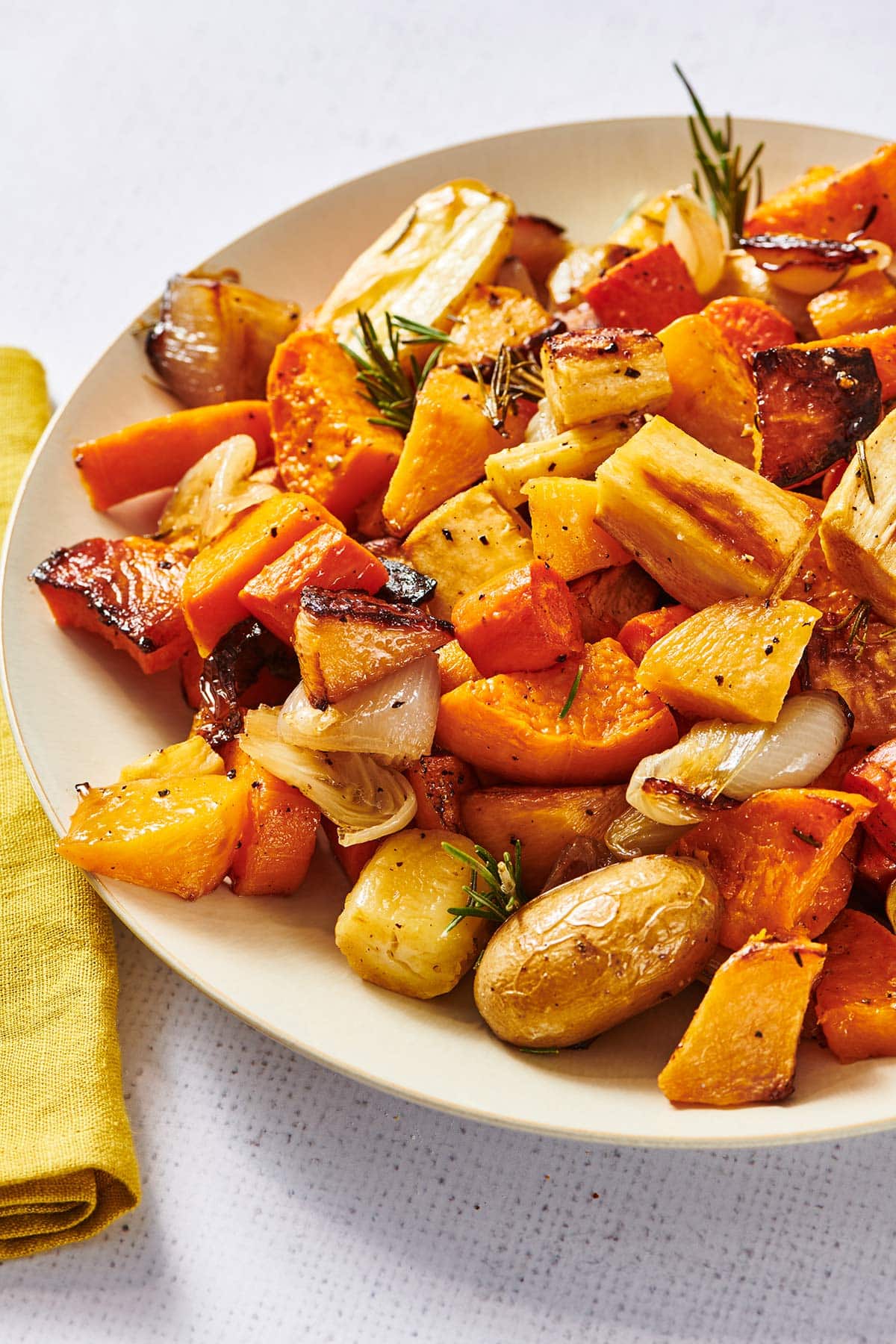
I like to use a combo of about four or five different vegetables for roasting, but you can stick to one or two or three. You’ll see that the recipe calls for making two sheet pans of vegetables — that’s because you want to roast vegetables in a single layer on a sheet pan, and once you start slicing and cubing your vegetables, you’ll quickly have more than will fit on one pan!
It really doesn’t matter because leftovers are AMAZING in so many ways, and you will find lots of uses for them later in the week. Also, in my house, people start picking the veggies from the baking sheet as soon as they are out of the oven. By the time dinner rolls around, a hefty portion of them have somehow disappeared. You really can’t make too many.
Oven-Roasted Fall Vegetables: Colorful, caramelized and so good for you, this is the best way to cook all kinds of cool-weather vegetables.
Tweet This
Best Vegetables for Roasting
Think about creating a variety of flavors and colors in your selection. Some people par-cook their vegetables before they go into the oven, but with the right amount of olive oil, I haven’t found that to be necessary. And who doesn’t like saving a step in a recipe?
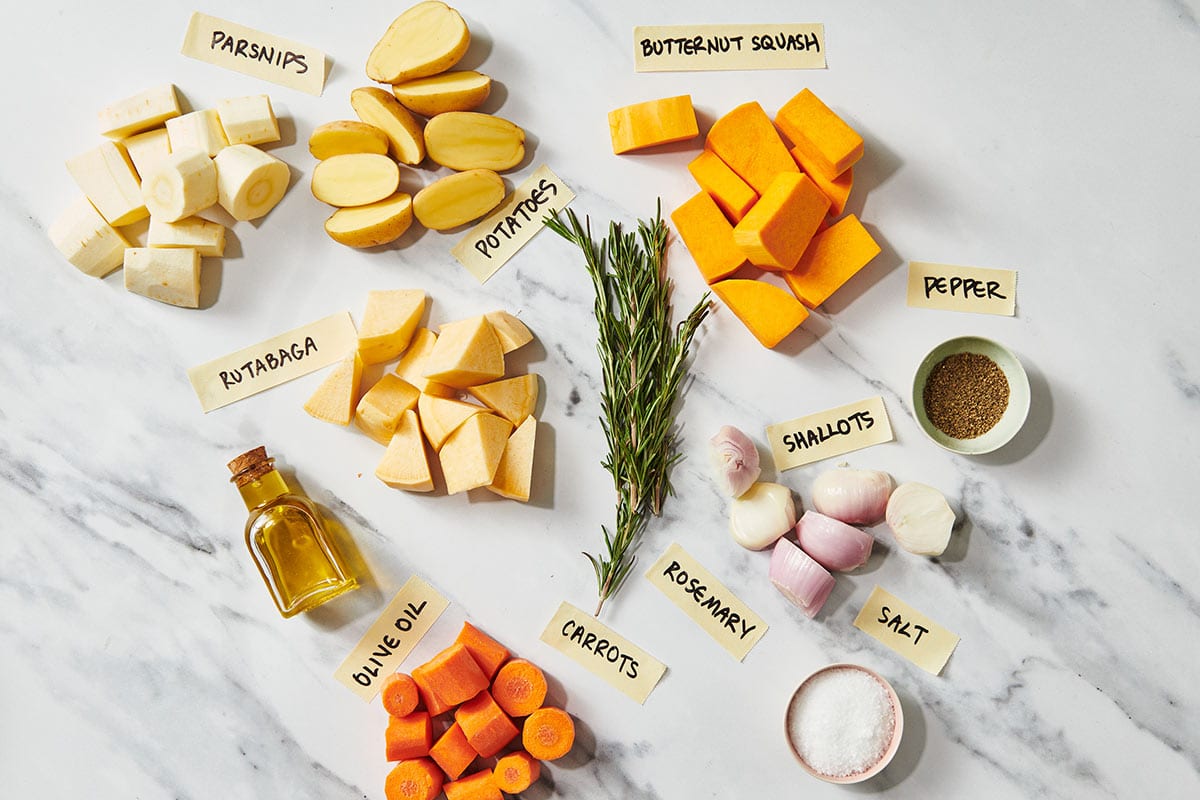
- Potatoes – You can use tiny whole potatoes, halved smaller potatoes, or cubed large potatoes. Waxy potatoes will hold their shape better than all-purpose. Try red, white, and purple potatoes or a combo.
- Sweet potatoes – Again, you can use halved baby sweet potatoes or cubed larger ones. There are lots of sweet potato varieties out there — play around with them!
- Parsnips – This earthy root vegetable is kind of bland when uncooked but becomes sweet when cooked.
- Rutabagas – These might also be called yellow turnips.
- Turnips – Turnips have a lightly sour flavor, which goes well with some of the sweeter roasted vegetables.
- Carrots – Try different colored carrots for cool pops of color — look for purple, white, orange, yellow, and red carrots.
- Shallots – I adore roasted shallots and add them to practically every roasted vegetable medley I make. They become soft, silky, and sweet. Peel the shallots before roasting, and halve them if they are large, or leave them whole if they are on the smaller side.
- Onions – You can use peeled baby or cippolini onions. Or use larger onions peeled and cut into chunks.
- Butternut squash – Sweet and a beautiful orange color, most people love to see roasted butternut squash as part of the combo.
- Cauliflower – A cruciferous vegetable, not a root vegetable, but one that takes extremely well to roasting, becoming beautifully caramelized.
- Broccoli – Broccoli is less dense than most root vegetables, so it will cook faster. Consider adding the broccoli about 20 minutes into the roasting time. Or, cut the broccoli into larger florets, including the stem, and then halve those pieces after they come out of the oven if you like.
Cutting Vegetables for Roasting
Here are some tips for making your tray of roasted vegetables look as appetizing as possible and also allowing them to cook through at the same time!
- Peel vegetables with tough skins, like turnips, rutabagas, and most winter squash (with acorn squash, the skin can be left on). Vegetables like potatoes, carrots, and parsnips can be peeled or just scrubbed.
- For root vegetables of similar density, you’ll want to make sure the pieces are close to the same size so they will cook through in the same amount of time.
- Change up the shape of the chunks for optimal prettiness. Carrots, parsnips, and the like can be cut crosswise into 1 ½-inch lengths. Butternut squash can be cut into chunks with a similar thickness. Rutabagas or turnips can be quartered and sliced. Baby potatoes can be halved.
How to Roast Fall Vegetables
- Prepare the oven: Preheat the oven to 425 degrees. Arrange two oven racks so that they are evenly spaced out in the oven, with room between them.
- Prep the veggies: Divide the vegetables between two rimmed baking sheets. Drizzle ¼ cup olive oil over the vegetables, season with salt and pepper, and toss to combine. If you think more oil is necessary, drizzle over a bit more: the vegetables should all be very lightly coated with the oil. Spread out the vegetables on each of the baking sheets so they are in a single layer. Break four of the rosemary sprigs into pieces and tuck them in between the vegetables on the baking sheets.
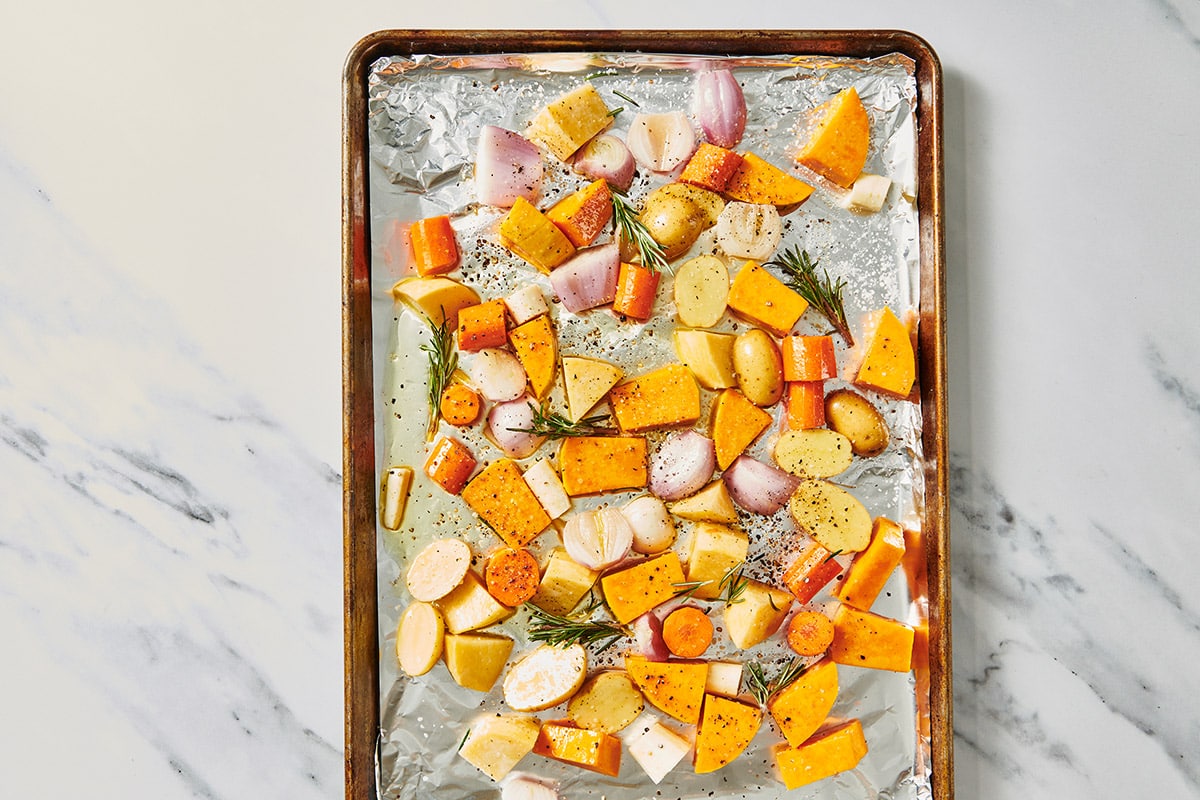
- Roast the veggies: Place the trays in the oven and roast for about 50 minutes, switching the trays halfway through the cooking time so they roast more evenly.
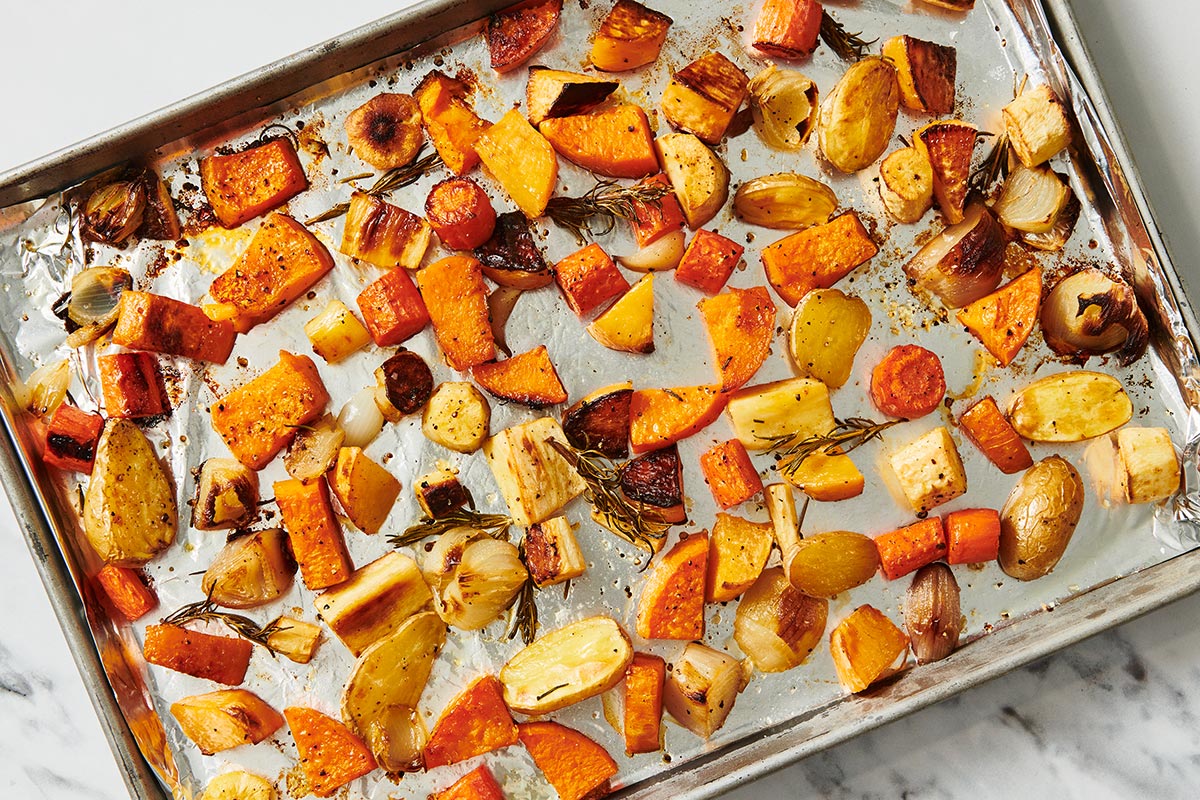
- Serve: Remove the herb sprigs and transfer the vegetables to a serving platter. Garnish with the additional fresh rosemary sprigs and serve hot or warm. Check to see if they need additional salt and pepper.

Pro Cooking Tips
- Breaking the fresh rosemary into smaller pieces allows for better contact between the herbs and more of the vegetables. Pull off some of the leaves so they are better spread throughout.
- Make sure your vegetables are in a single layer, and if possible, there should be some space between the vegetable chunks. This allows the hot air to circulate better around the vegetables and enables them to get more caramelized.
- You can cut up most vegetables up to 2 days ahead of time and then toss them with the oil on the sheet pan just before roasting.
- Do not cut the potatoes until just before you are ready to cook them, or they will turn brown. Or, you can cut the potatoes a couple of days ahead of time and store them in a bowl of cold water to cover in the fridge. Pat them dry before adding them to the sheet pan and drizzling over the olive oil.
- Be generous with the olive oil and salt and pepper.
Sauces for Roasted Vegetables
Roasted vegetables are delicious all on their own, but if you want to take things to the next level, you can serve them drizzled with a sauce or pass the sauce on the side for people to add as they like. Here are some of my favorite sauces for pairing with roasted veggies:
- Chimichurri Sauce (pictured below)
- Creamy Cilantro Sauce
- Salsa Verde
- Chermoula
- Pesto
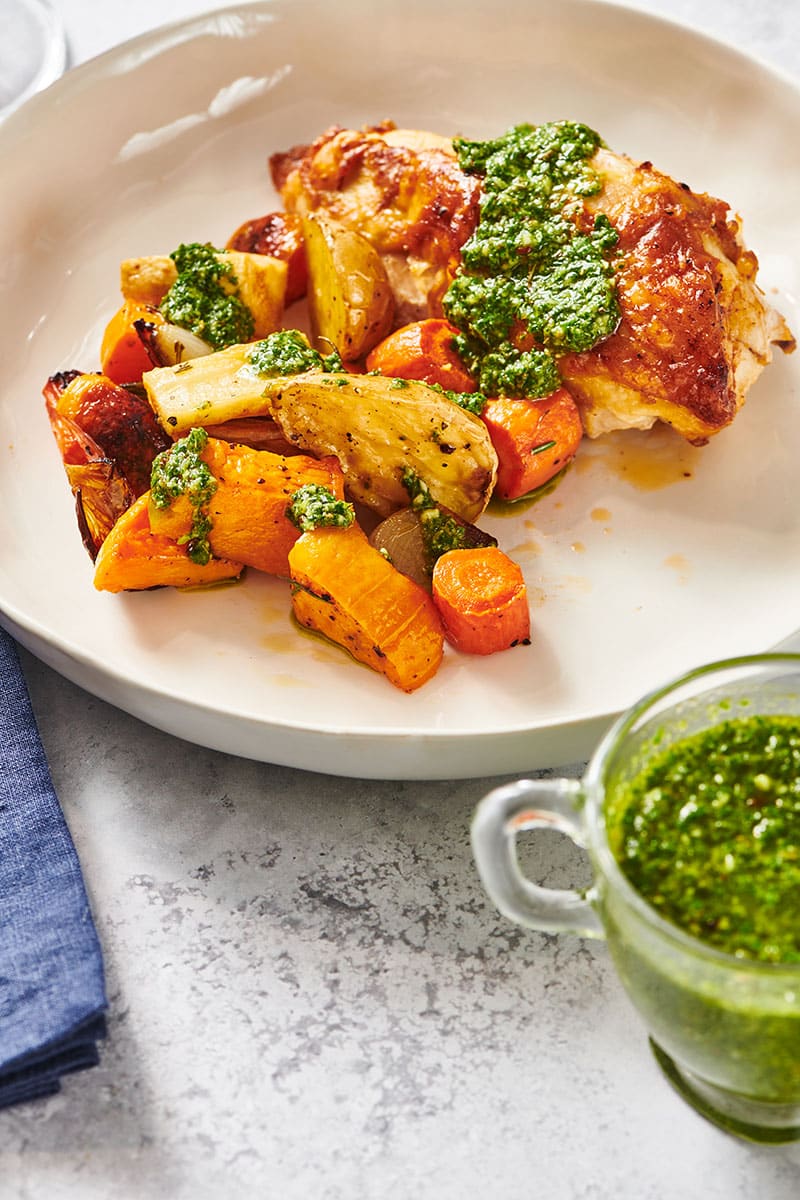
Variations
- Use other herbs instead of or in addition to the rosemary: Try thyme, oregano, or marjoram. If you don’t have fresh herbs, you can toss the veggies with a teaspoon of your favorite dried herb before they go into the oven.
- Add a bit of lemon zest to the vegetables just before serving.
- Sprinkle over some gremolata.
- Sprinkle over some pomegranate seeds.
Leftovers and Storage
There are so many things to do with leftover roasted vegetables. It’s absolutely worth making that second sheet tray even if you don’t have a big crowd or an immediate plan for the extra!
You can puree them into soups, and you can chop them and add them to lasagnas or casseroles. You can use them in pasta sauces, quesadillas, and grain bowls…Read here for a ton of great ideas for leftover roasted vegetables!
Keep leftover vegetables for up to 5 days in the fridge. Reheat them on a baking sheet in a 350-degree oven for about 10 to 15 minutes until warm or hot. You can also warm them in the microwave.
What to Serve With Roasted Vegetables
There are few things that roasted vegetables don’t go with, but here are some of my favorite pairings:
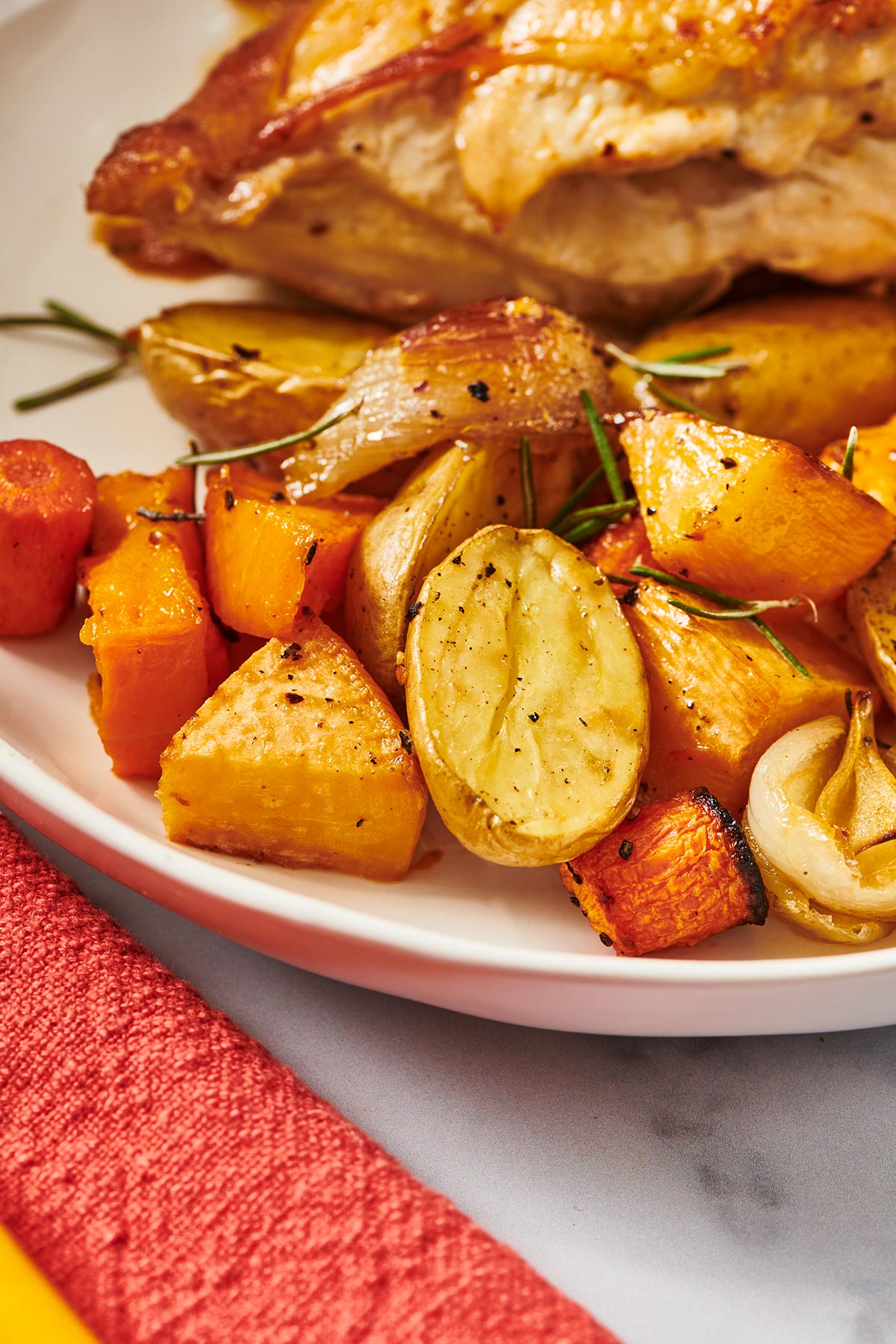
More Fall Side Dishes
- Sautéed Cauliflower with Mustard Seeds
- Candied Sweet Potatoes
- Corn Pudding
- Wild Rice Salad with Cranberries
- Braised Red Cabbage
Pin this now to find it later
Pin It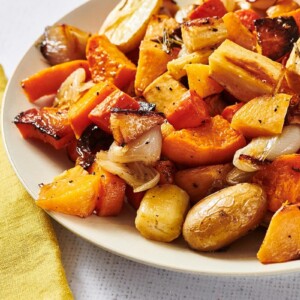
Roasted Fall Vegetables
Ingredients
- ½ butternut squash (about 1 ½ pounds; peeled, quartered lengthwise, and cut into 1-inch thick slices)
- ½ pound carrots (peeled and sliced into 1 ½-inch pieces)
- ½ pound parsnips (peeled and sliced into 1 ½-inch pieces)
- ½ pound rutabaga (peeled and sliced into 1 ½-inch pieces)
- ½ pound large shallots (peeled and halved)
- ½ pound small potatoes (halved)
- ¼ cup olive oil (approximately)
- Kosher salt and freshly ground pepper (to taste)
- 4 sprigs rosemary (plus additional sprigs for serving)
Instructions
- Preheat the oven to 425 F. Arrange 2 oven racks so that they are evenly spaced out in the oven, with room between them.
- Divide the vegetables between 2 rimmed baking sheets. Drizzle ¼ cup olive oil over the vegetables, season with salt and pepper, and toss to combine. If you think more oil is necessary, drizzle over a bit more: the vegetables should all be very lightly coated with the oil. Spread out the vegetables on each of the baking sheets so they are in a single layer. Break 4 of the rosemary sprigs into pieces and tuck them in between the vegetables on the baking sheets.
- Place the trays in the oven and roast about 50 minutes, switching the trays halfway through the cooking time so they roast more evenly.
- Remove the herb sprigs and transfer the vegetables to a serving platter. Garnish with the additional fresh rosemary sprigs and serve hot or warm. Check to see if they need additional salt and pepper.
Notes
- Breaking the fresh rosemary into smaller pieces allows for better contact between the herbs and more of the vegetables. Pull off some of the leaves so they are better spread throughout.
- Make sure your vegetables are in a single layer, and if possible, there should be some space between the vegetable chunks. This allows the hot air to circulate better around the vegetables and enables them to get more caramelized.
- You can cut up most vegetables up to 2 days ahead of time and then toss them with the oil on the sheet pan just before roasting.
- Do not cut the potatoes until just before you are ready to cook them, or they will turn brown. Or, you can cut the potatoes a couple of days ahead of time and store them in a bowl of cold water to cover in the fridge. Pat them dry before adding them to the sheet pan and drizzling over the olive oil.
- Be generous with the olive oil and salt and pepper.
- Keep leftover vegetables for up to 5 days in the fridge. Reheat the on a baking sheet in a 350 oven for about 10 to 15 minutes until warm or hot. You can also warm them in the microwave.
